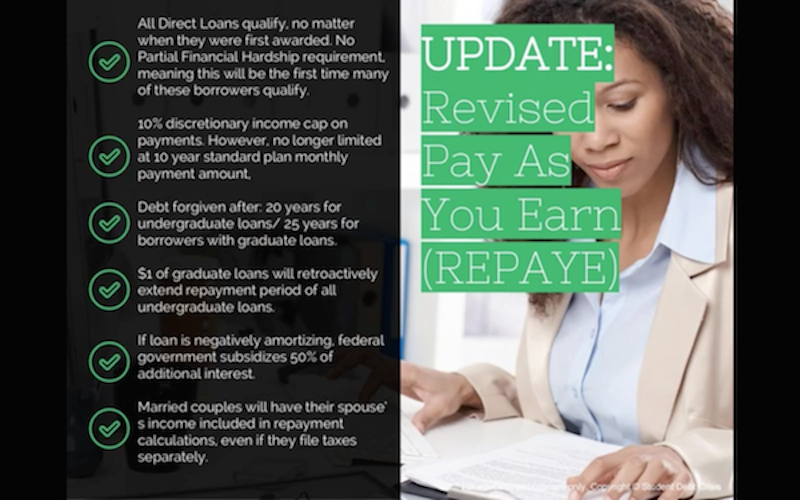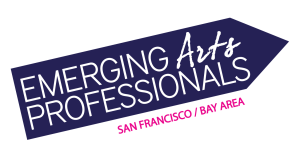Leadership Transition Announcement
We are excited to share an important update in leadership for our organization! (read on)
We are excited to share an important update in leadership for our organization! (read on)
For many of us who work in the nonprofit sector and have degrees in higher education, it is likely — and common — that we are slaves to the devil: Student Loan Debt. Here at EAP SFBA, we often discuss the sustainability or lackthereof within the nonprofits. Do nonprofits provide employees with realistic, livable wages? Are higher degrees required for these positions, and do those wages account for the cost of obtaining that education? Lastly, what resources can we provide each other with to help decreasing our debt?
With that said, we listened in on CalNonprofit’s webinar on Public Service Student Loan Forgiveness. Among the many payment plans and programs that are there to aid us, the Public Service Student Loan Forgiveness program (PSLF) has gained traction. Here’s a quick introduction:
We heard from four presenters to help foster awareness of the resources available to us: Natalia Abrams and Cody Hounanian of Student Debt Crisis; Maggie Thompson of Higher Ed, Not Debt, and Diana Dunker from CalNonprofits. This hour and a half webinar was jam-packed with information! Though they have provided a recording of the presentation, we at Emerging Arts Professionals have synthesized our notes on the main three components this webinar was designed to cover.
There are three buckets of eligibility: Payment, Loan, and Employment.
Payment eligibility requires individuals to make 120 monthly payments. They must be scheduled, paid in full and on time each month. Scheduled payments are those that are made while in repayment, not in deferment, in-school or grace status, or paid ahead in prepayment. Participants in the PSLF program must be enrolled in qualified payment plans: 10-year Standard repayment plan (SRP); Income Contingent Repayment (ICR); Income Based Repayment (IBR); or Pay as you Earn or the Revised PAYE plan (PAYE/RePAYE).
Loan eligibility deems that only Direct Loan Program loans that are not in default are eligible for PSLF. Loans received under the Federal Family Education Loan (FFEL) Program, the Federal Perkins Loan (Perkins Loan) Program, or any other student loan program are not eligible for PSLF. If you are unsure or cannot remember which kind of loan you have, you can always look it up on the National Student Loan Data System. Also, if you have previously consolidated your loans, then you must start your 120 eligible payments from the time of consolidation.
Employment eligibility requires participants to be a hired employee, working full-time for a qualifying organization. A qualifying organization is a Federal, State, or local government agency, entity, or organization or a tax-exempt organization under Section 501(c)(3) of the Internal Revenue Code (IRC).
The same payment plans required for the payment eligibility are the same options once enrolled in the PSLF Program, aside from the 10-year Standard Repayment Plan. Here’s a quick breakdown on the following: ICR, ICB, PAYE and RePAYE.

Now, the easy step. Once you have figured out whether or not you qualify and have your ducks in order, all you have to do is fill out the PSLF Employment Certification form! This can be printed, filled and submitted to the U.S. Department of Education FedLoan Servicing at P.O. Box 69184, Harrisburg PA 17106-9184, or faxed to 717-720-1628. Note that Section 4 of the form must be filled out by your employer.
While this only begins to scratch the surface, we encourage you all to dig into the rich resources to help reduce student loan debt! Below are some links that we found are useful, and if you have an extra hour and a half to spare, we recommend listening to the webinar. We thank CalNonprofits for hosting and for the presenters for sharing their expertise!
Additional Resources:
National Education Association’s Public Service Awareness FAQ’s
http://www.nea.org/home/60605.htm
Public Service Loan Forgiveness Certification Form (Section 8 goes into detail of requirements)
https://studentaid.ed.gov/sa/sites/default/files/public-service-employment-certification-form.pdf
National Student Loan Data System
Higher Ed, Not Debt
Student Debt Crisis
Full recording of the webinar:
https://calnonprofits.app.box.com/s/8spbum0tur4trbbfqensvwr1f1j9yhuk
Often we are part of a one- or two-person show in our organizations, and finding the resources to lead a full-fledged individual giving campaign can be an uphill struggle (and then some). The East Bay Gives (EBG) fundraising day and platform aligns with EAP/SFBA’s value of relevancy and proactivity. The crowd source and mobilization tactic is here to stay, and this is a great opportunity for small nonprofits (and fiscally sponsored projects) to try out with the support of a major local institution.
As January creeps right around the corner, so too does the special annual day of donations and fundraising! Orchestrated by the East Bay Community Foundation (EBCF), in partnership with electronic fundraising platform, Kimbia Inc, EBG presents a 24-hour day of prizes for nonprofits in Alameda and Contra Costa from community funders. From the East Bay Gives website from last year:
East Bay Gives 2015 is an opportunity to mobilize everyone in the East Bay on the same day for 24 hours. Last year, on May 6, 2014, from midnight to midnight, East Bay Gives raised more than $200k for 140 nonprofit organizations, and we’re excited about the response from our community that indicates we will be even more successful this year. Join us! Spread the word about East Bay Gives, and be sure your favorite nonprofits are registered so that you can give local on May 5, 2015.
Sound like something your organization can use? In case you missed their webinar on Friday, December 11th, here are some key takeaways that we at EAP/SFBA compiled for your convenience!
Sounds exhilarating, right? Why not take a chance at getting an extra $50k of funding to start your organization’s New Year! The stakes are even higher this year, as the East Bay Community Foundation has improved upon the previous two years. There are tons of other notes and advice that can be found on the East Bay Gives website. It’s full of rules and FAQs – and be sure to get on their mailing list or ‘like’ them on FB to stay up-to-date with information about registration on January 4th, 2016! For further questions or clarifications, you can also contact the EBG team members Jeri Boomgaarden, Sarah Merkle, and Dawn Robinson at givelocal[at]eastbaycf[dot]org, or reach them by phone at (510) 836-3223.
We wish all those interested in participating the best of luck! And of course, we want all of our Emerging Arts Professional networks to receive nothing but the best, so if you are reading this, send this to your friends with orgs who can use some extra funds. I know I want all my co-founding, co-directing, co-conspirators–oops I meant collaborators to see the benefits of this process.
Happy fundraising, y’all, we hope all the strategies and donors come your way in the New Year.
EAP is a fiscally-sponsored project of Intersection for the Arts. Intersection for the Arts is a historic arts nonprofit that provides people working in arts and culture with fiscal sponsorship and resources to grow.

